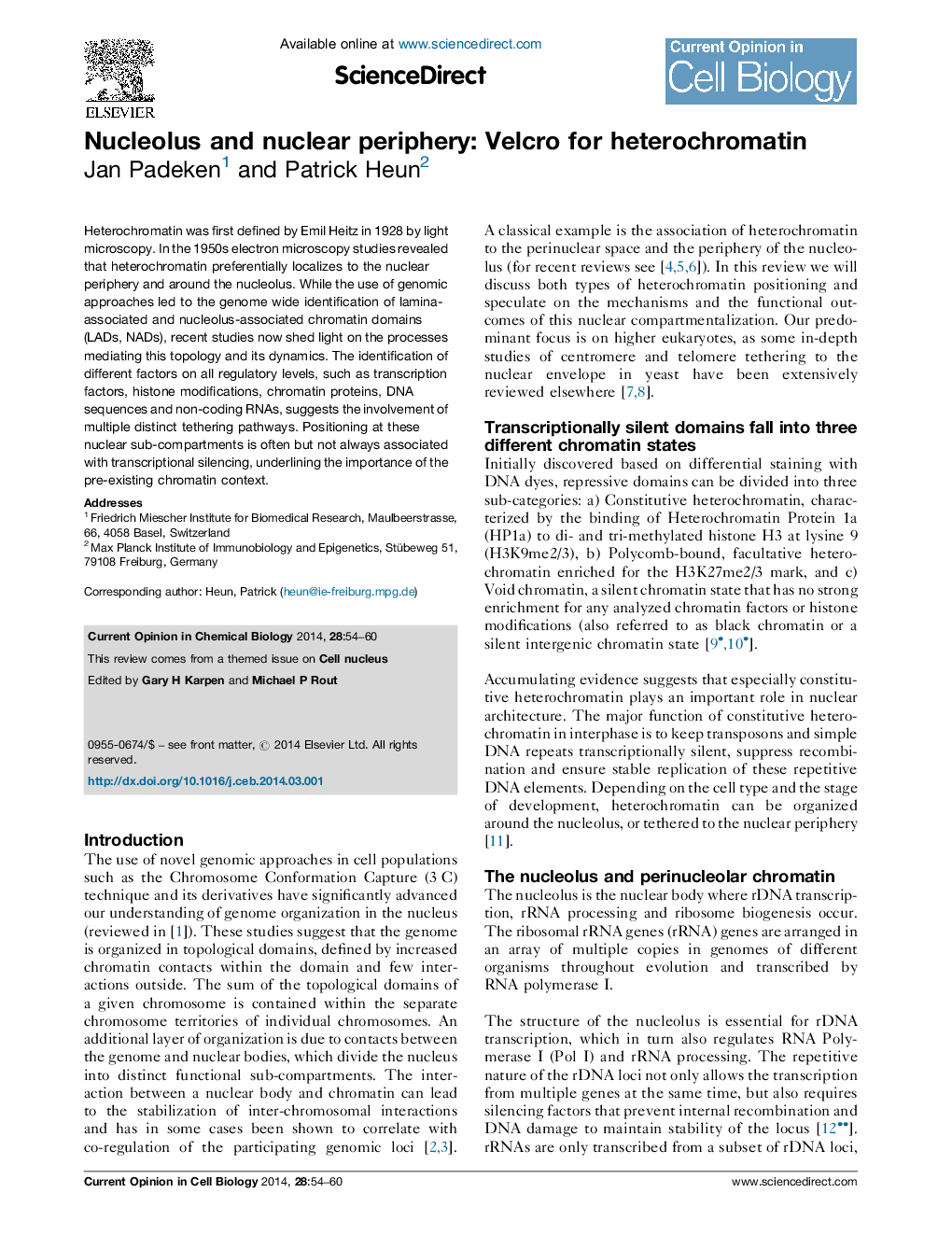| Article ID | Journal | Published Year | Pages | File Type |
|---|---|---|---|---|
| 8465903 | Current Opinion in Cell Biology | 2014 | 7 Pages |
Abstract
Heterochromatin was first defined by Emil Heitz in 1928 by light microscopy. In the 1950s electron microscopy studies revealed that heterochromatin preferentially localizes to the nuclear periphery and around the nucleolus. While the use of genomic approaches led to the genome wide identification of lamina-associated and nucleolus-associated chromatin domains (LADs, NADs), recent studies now shed light on the processes mediating this topology and its dynamics. The identification of different factors on all regulatory levels, such as transcription factors, histone modifications, chromatin proteins, DNA sequences and non-coding RNAs, suggests the involvement of multiple distinct tethering pathways. Positioning at these nuclear sub-compartments is often but not always associated with transcriptional silencing, underlining the importance of the pre-existing chromatin context.
Related Topics
Life Sciences
Biochemistry, Genetics and Molecular Biology
Cell Biology
Authors
Jan Padeken, Patrick Heun,
